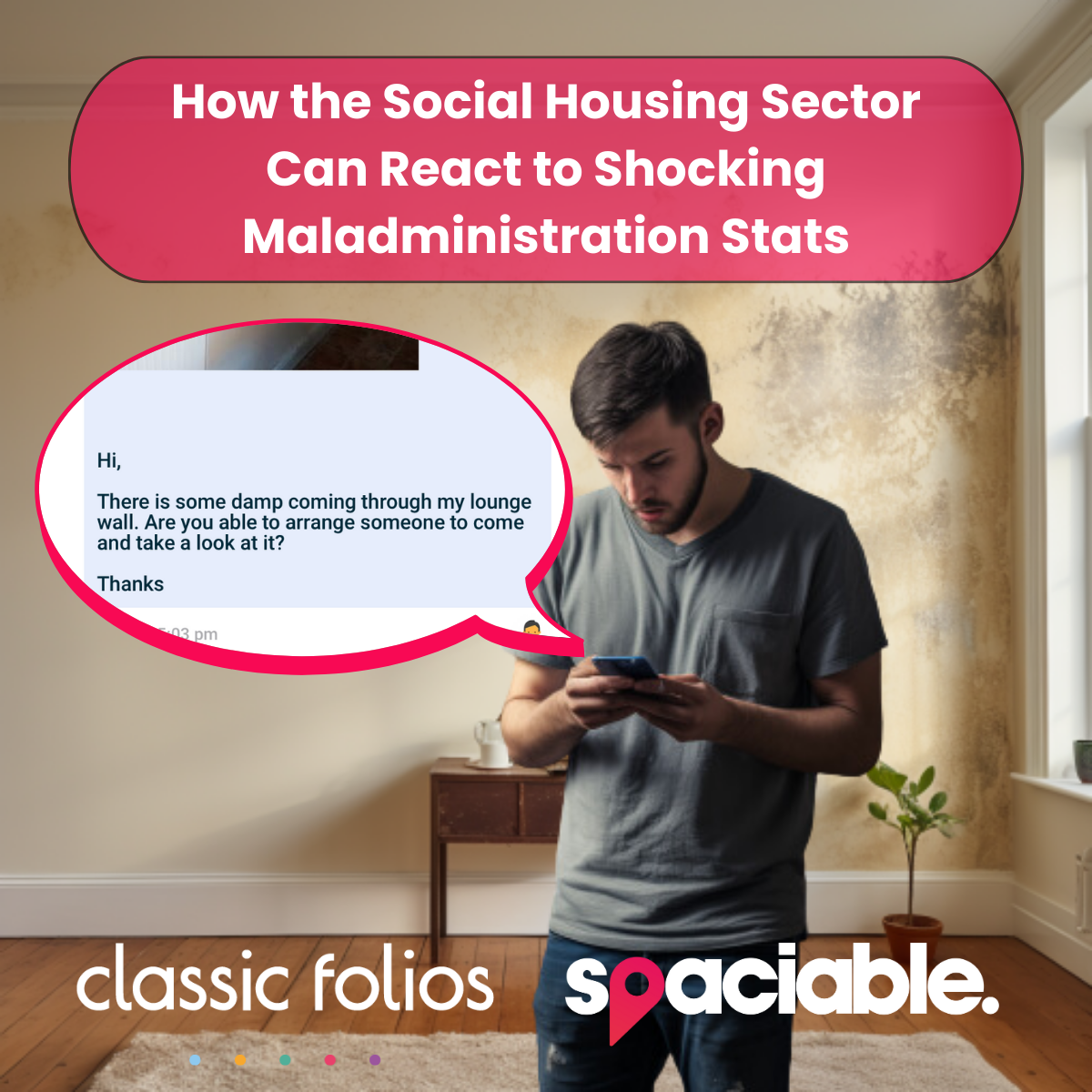How the Social Housing Sector Can React to Shocking Maladministration Stats
Where Does the Social Housing Sector Go from Here?
With the Housing Ombudsman’s Annual Complaints Review revealing severe maladministration in the social sector, housing associations and local authorities are confronted with the challenge to earn tenants' trust back.
Housing associations and local authorities have been rocked by the news that the Housing Ombudsman’s Annual Complaints Review has seen an unsettling 323% rise in findings of severe maladministration.
This isn’t an ambiguous statistic that looks different in certain context. Nor is it one that can be swept under the carpet. It’s the kind of statistic that makes mainstream news, with a prominent spot on the BBC News website.
What tends to follow is naming and shaming, and reputational damage that can take years to overcome.
This is clearly a bitter blow to a sector that has conscientious intentions, but whether due to budgetary restrictions or general lack of resources, can struggle to sufficiently address the tenant expectations.
The disconnect between tenants and social landlords appears to be widening, and news stories about dangerous living conditions have perhaps created a distrust in landlords, whilst empowering tenants to raise issues when perhaps they were previously hesitant to. As such, the Ombudsman received over 5,000 complaints for the first time last year.
The Impact of Tenant Satisfaction Measures and Importance of a Quick Response
The Tenant Satisfaction Measures were introduced to alleviate some of the issues that were damaging the tenant experience, such as poor communication, inadequate reporting processes and lack of understanding, and it is likely that it will take some time for the subsequent actions to have a notable impact. With that being said, social landlords can’t afford to rest on their laurels and assume that next year’s report will paint an entirely different picture.
Immediate action is essential for landlords to show how seriously they are treating this matter, and to directly address the accusations of maladministration with long-term solutions.
Challenges Faced by Social Landlords
Doing so will present some clear challenges. The aforementioned budgetary restrictions and/or lack of in-house resources will become a hot topic – and in many cases, become part of a wider discussion around government support, but there are ways around this obstacle.
Our residential engagement and property management app, Spaciable Living, can help resource-stricken social landlords establish more robust processes for some of the sector’s most significant issues.
In cases of defect reporting, for instance, tenants are able to details any issues within their property, and upload images of the item.
Streamline Defect and Issue Reporting for Tenants
A series of Chatbot questions will establish whether this issue is one that the tenant is themselves responsible for repairing and, if so, how they can carry out this work. In the case that the issue is the responsibility of the landlord, this will instigate an auditable trail of communication and progress, which can be checked by both parties for updates.
Not only does this feature of the app digitise and automate the initial stages of defect reporting, thus saving time for your team, it also ensures that no issues are missed or delayed, as reports are always swiftly arriving at the correct person in your organisation.
Bridge Communication Between Landlords and Tenants
Another issue faced by the sector is the feeling of tenants that they do not have a voice. Spaciable Living allows you to maintain open channels of communication with the app’s Chat feature. Here, admins can send out updates, images and news either to individuals or across the whole development, whilst tenants can communicate with neighbours, establishing common interest groups, such as dog walking meets. This simultaneously strengthens the relationship between the attentive landlord and their tenants, whilst also helping tenants to engage with their community.
Spaciable Living also provides a Survey feature, which allows landlords to carry out digital surveys in order to collect valuable tenant feedback. This feedback serves a dual purpose, allowing landlords to see areas where they might need to amend their services, and also ensuring tenants know they have a voice and that their thoughts will be considered by their housing provider.
Another feature of the app that could greatly enhance the service offered by social housing providers is that of the Notifications feature, which allows admins to send push notifications about visits and add them to the shared digital calendar on the app.
Let’s take an example of a situation that we have heard a lot about in the news, that of damp and mould inside the home.
A tenant could report this issue through the app, gain some practical tips on how to limit the spread of the mould, such as keeping windows open, and not drying laundry inside, for instance. Now this issue, along with supporting images will be sent to the landlord. The landlord might like to visit the property with a professional, in order to see the scope of the issue and discuss options for treatment.
The tenant will receive an invitation for this visit by the landlord, and therefore already know that action is being taken. In itself, this assurance that the issue has been received and will be resolved helps to alleviate feelings of anxiety for the tenant.
Reassuring Tenants and Supporting Landlords
As a landlord, Spaciable Living can be the defining change you make, between thinking that you’re doing all you can for your tenants, and knowing that no issue is going unreported or attended to.
To find out more about how Spaciable Living can help you improve your processes and the service you’re providing, get in touch to arrange a demonstration.


